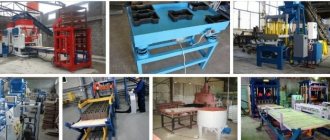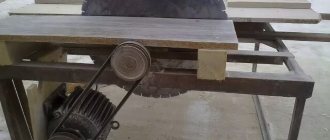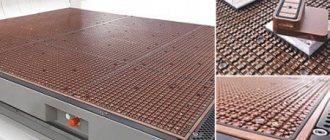The furniture industry today is developing at a very active pace, which is associated with an increase in people's well-being and, accordingly, with an increase in demand for furniture that improves the quality of life and makes it more comfortable. This, as well as the fact that modern consumers have become more demanding not only of the quality of furniture, but also of its decorative characteristics, has led to the fact that enterprises operating in this industry have become increasingly active in using innovative techniques and high-tech technologies in their production. equipment, one type of which is a vacuum press.
The vacuum press is used in the production of furniture facades, table tops, doors and for the production of decorative elements from acrylic or ABS plastic
The use of a vacuum machine and corresponding consumables makes it possible to provide furniture with completely unique decorative characteristics, which significantly increases the competitive advantages of the enterprise that uses this equipment in its production.
Operating principle
The main area of application of vacuum presses is the furniture industry, where such equipment is used in the production of elements of cabinet and upholstered furniture - for gluing elements of furniture structures with PVC film and veneer, which perform primarily decorative functions. The tasks of the vacuum press in this case include depositing the film or veneer and ensuring their tight fit to the surface of the furniture structural element.
Vacuum pressing technology ensures fast and high-quality finishing of MDF
The principle by which a vacuum press works for veneering and covering furniture blanks with PVC film is quite simple. The heated film, which has become more plastic under the influence of the vacuum created under its surface, tightly fits the furniture piece, accurately repeating its configuration.
The film applied using vacuum technology to the surface of a piece of furniture made from MDF or chipboard lasts a very long time and does not contain even the smallest air bubbles.
The process of gluing a furniture element with PVC film using a vacuum press includes such technological operations as:
- laying furniture pieces on the equipment table;
- covering the workpieces with film and installing a pressure frame;
- sealing the vacuum chamber;
- heating the chamber and pumping air out of it;
- cooling of workpieces already covered with film;
- cutting the film along the contour of the blanks.
Why compact waste polymers?
Plastic polymers are a cheap and high-quality material for the production of many modern things. In connection with their massive use, the issue of disposal of such products has become acute .
Since the decomposition period of plastics is hundreds of years, without the widespread introduction of recycling technologies, very soon we could completely fill the planet with plastic bags and bottles.
To use plastic waste for subsequent production , you need :
- collect;
- sort;
- deliver to the processing site.
As a rule, products made from polymers have a small mass and a significant volume (bottles, film, boxes), so transporting them in their original condition is unprofitable .
Sorted waste must be turned into briquettes that are convenient for transportation . This can only be done with the appropriate press.
Therefore, this equipment is the first link in the technological chain of polymer recycling.
If the business produces a significant amount of plastic waste, namely:
- bottles;
- packages;
- boxes;
- films,
then their removal by public utilities costs a pretty penny.
But once you spend money on a press, you can, on the contrary, start making money by delivering polymer waste to recyclers, or at least significantly reduce the number of waste removal trips.
Also, collecting and recycling plastic waste can be an independent and quite profitable business .
Design features
The vacuum press for furniture facades and other elements of its design consists of the following elements:
- a vacuum table on the surface of which furniture pieces are laid (the surface of such a table must have high rigidity, so it is sheathed with sheet metal or thick tin);
- a vacuum pump, the task of which is to pump out air from under the surface of the film for furniture blanks;
- a clamping frame, which is also made of durable metal (the function of such a frame, equipped with reliable clamping elements, is to ensure the tightness of the air cavity under the film that covers the furniture blanks);
- heating installation, which can be made on the basis of working elements of various types;
- cover of a vacuum press, which can be hinged or roll-type.
Basic elements of a vacuum press
Most models of vacuum presses are additionally equipped with one or more shafts installed at the end of the equipment. Such shafts, which make working on a vacuum press more convenient and reduce the time required to complete technological operations, are used to install rolls of film used for coating.
Many modern models of vacuum presses for MDF and chipboard can operate in automatic mode, which is ensured by CNC systems installed on such equipment. The use of CNC vacuum presses is especially relevant for enterprises that produce furniture in series, when such equipment has to be used to cover many similar parts with film or veneer. In such cases, CNC systems installed on such equipment make it possible to increase its productivity and, accordingly, reduce the cost of manufactured products.
Industrial CNC membrane vacuum press with heated top and bottom platen
Clamps
To hold the film securely and airtight when vacuum pressing occurs, we press the top frame tightly and evenly against the perimeter of the vacuum frame. This way the rubber seal will fit completely.
Homemade clamps, which operate on the eccentric principle, are made from the following rolled steel:
• 1 pipe DN50: 0.5 m, with an outer diameter of approximately 60 mm; • rod: 2 m, diameter 10 mm; • profile pipe: 2 m, 20x20x2 mm.
We adjust the clamps by installing combination nuts in the desired location on the stud thread and securing them with locknuts. This operation is performed at the final stage of manufacturing the vacuum table, after the rubber seal has been glued.
Source
Main varieties
Today, two types of vacuum presses are produced:
- conventional type equipment (such presses are used in cases where it is necessary to exert the most gentle influence on the workpiece, and are capable of creating a pressure whose value does not exceed 0.95 kg/cm2);
- high-pressure vacuum presses (equipment of this type is capable of providing pressure up to 8.5 kg/cm2).
In a conventional press, the facing material is pressed against the part by atmospheric pressure, and in a press with excess pressure, compressed air is additionally pumped into the cavity above the workpiece
Equipment of the first type is used in cases where it is necessary to cover products with a simple configuration with PVC film or veneer. Vacuum presses capable of creating high pressure are used for veneering or covering with PVC film parts of complex shapes. In addition, such equipment is often used as a vacuum molder, with the help of which three-dimensional products of various configurations are made from sheet plastic.
The most common two layout options for vacuum presses are:
Purpose of the membrane in the design of a vacuum press
Both types of devices are equipped with a special membrane, so their more correct name is membrane-vacuum presses. Such an element of a vacuum press is used both when veneering elements of furniture structures and when covering them with PVC film. In the first case, the membrane is necessary in order to increase the pressure exerted on the surface of the workpiece and the coating material during the process of joining them. In addition, when creating a veneer layer on the surface of a workpiece made of MDF or chipboard, the membrane prevents the coating material from shifting relative to the surface of the workpiece during the process of joining them. When covering furniture pieces with too thin PVC films, the membrane protects them from the negative effects of high temperatures created in a vacuum chamber.
Operating principle of a vacuum press with or without membrane
The membranes that vacuum presses are equipped with can be of two types: rubber and made of silicone. A more preferable option is silicone membranes, since they are more wear-resistant and allow you to cover even very small parts with PVC film.
Device
Photo of a vacuum press
A vacuum press consists of several main elements:
- Frame. Often this supporting structure is made in a collapsible type, which allows for repair, maintenance, disassembly for convenient transportation;
- Desktop. This is also a supporting structure, which is equipped with a special clamping frame;
- Vacuum system. This pneumatic system is the main element, without which it is difficult to imagine a vacuum press as such;
- Retractable carriage. There is a heating element here that is powered by electricity;
- Automatic control. Press vacuum drying chambers, doors, carriages, and the vacuum system itself operate using automatic controls. The operator's participation is minimal, which makes it possible to achieve higher quality artificial veneering, manufacturing elements for furniture facades, gluing plastic, chipboard, MDF, etc.
Photo of a vacuum press device, to create with your own hands
Vacuum press is classified according to several main characteristics. Let's start with the automation level. Depending on this characteristic, devices for pressing wood, facades, plastic, artificial stone are divided into two types.
- Automatic. Here, the wood, artificial stone, and plastic presser performs all operations independently, so operator participation is practically not required.
- Semi-automatic. These are more outdated models of wood pressing machines, since the operator must open the doors of the press chamber, press buttons to start, turn off, and remove compressed elements from wood, plastic, and MDF with his own hands. Their life is gradually coming to an end, since it is more efficient to work with devices where the mold operates in an accelerated automatic mode.
Other Applications
In addition to gluing the surface of furniture structural elements with veneer and PVC film, a membrane vacuum press (MVP) can be successfully used to solve other problems, which, in particular, include:
- transfer of inscriptions and images to any surface using sublimation;
- formation of volumetric parts for various purposes from plastic sheets.
To transfer images from special paper to almost any (including embossed) surfaces using the sublimation method, equipment such as a thermal vacuum press is used. Using a thermal vacuum membrane press, you can apply inscriptions and images to products made from ceramics, plastic, textiles and other materials.
Tabletop membrane-vacuum press
The principle on which a membrane vacuum heat press works is as follows.
- The product with a sheet of paper attached to it, from which an inscription or image needs to be transferred, is placed on the table of a vacuum press.
- The tight pressure of a sheet of paper with an image or inscription on the product is ensured by the press membrane, under which a vacuum is created.
- Under the press lid, after it is closed, a temperature is created, under the influence of which the image or inscription from the paper is transferred to the surface of the product.
Vacuum heat presses, presented on the modern market with a wide variety of models, are actively used by both large printing enterprises and small companies engaged in the production of souvenirs.
Vacuum press for plastic molding
A vacuum molding press is used to produce relief-shaped products from sheet plastic. Using such a molding machine, which operates on the principle of a membrane-vacuum press, three-dimensional products can be made from flat plastic sheets, the depth of depressions or convexities on the surface of which reaches up to 500 mm. The housings of vacuum presses of this type, as a rule, are designed for fairly large products, which makes it possible to produce a wide range of products using such equipment.
Modern models of vacuum molding presses, equipped with CNC systems, have the option of simultaneously heating different areas of the workpiece to different temperatures. This makes it possible to produce volumetric products with rather complex relief from sheet plastic. The entire processing process on such equipment is controlled and controlled by a CNC system. Thus, do-it-yourself vacuum forming is not performed when using this equipment; the machine operator only sets the program, and the machine does the rest.
Do-it-yourself veneering press - Metalworker's Guide
Learn how to create several tons of pressure per square meter when gluing veneer.
Working with veneer is much easier than you think if you use a vacuum press to compress the glue. To introduce our readers to this process, we turned to professional furniture maker Matt Sailer, who often uses veneer in his work.
According to Matt, veneer offers several advantages.
“It allows you to change the direction of the grain pattern on the facing surfaces and even mix different species, which is difficult and sometimes impossible to do with solid wood.
Companies that produce and sell veneer offer products from hundreds of wood species and a huge variety of patterns and shades. This palette is simply amazing.”
WHAT IS NEEDED FOR VACUUM PRESSING
How does this system work?
The vacuum bag evenly distributes significant pressure over a large area, even over concave and convex surfaces, which is difficult and sometimes impossible to achieve with conventional methods. When air is pumped out of a sealed bag, the pressure from outside air compresses the bag and its contents.
If you think that such a clamp will be too weak, keep in mind the following: a panel measuring 610x915 mm inside the bag is compressed with a force of about 5.5 tons (if the process takes place at sea level.
With increasing altitude, atmospheric pressure decreases, and at an altitude of 1500 m above sea level the force will be 4.8 tons).
The photo below shows the main elements of the vacuum system. A basic set of pump, hose with fittings and vinyl bag measuring 125x125 cm can be purchased for S400.
To veneer long panels (such as in the Sixties Cabinet project), you need a bag measuring 125x250 cm. A vinyl bag of this size costs about $75, and a more durable polyurethane bag will cost $215.
Although the vacuum bag creates a fair amount of pressure, unadhered areas and swellings (so-called “siskins”) may be found on the veneer if additional measures are not taken.
Matt makes a "sandwich" by sandwiching the veneer panel between two pressure plates to distribute the pressure more evenly.
Make these plates from 19mm MDF board or laminated chipboard. Their dimensions should be approximately 25 mm larger than the package of parts.
Mill 6mm fillets on all edges and corners to avoid damaging the vacuum bag.
On one of the plates, use a saw blade to make a grid of 3 mm cuts with a pitch of about 100 mm. This will help completely pump the air out of the bag.
Do not use contact glue. Contact adhesive is considered the best choice for gluing sheets of plastic, but Matt recommends avoiding it if you're gluing wood to wood: "Under veneer, contact adhesive dries out, causing edges and corners to pull away from the backing and become easily damaged."
Choice of base and glue
For strong bonding, veneer requires a smooth surface called a base or substrate. MDF board is excellent for use as a base for panels such as doors, false panels and countertops.
For the panels on which the joints are then made, choose maple, beech or birch plywood. “But oak plywood should not be used,” says Matt, “its large pores will show through the thin veneer after pressing.”
Since you will be sawing the panels to final dimensions after gluing the veneer, make the base, including the edge caps, approximately 12 mm larger in width and length.
The glued overlays must be at least 25 mm wide so that after filing there is enough material left for routing the profiles along the edges.
If you want to cover a panel smaller than 60x60cm with one piece of veneer, you can use regular yellow PVA glue.
For larger areas, or if the shirt is assembled from several pieces of veneer, Matt uses a special one-component cold-press adhesive.
“It lasts longer so you can work without fuss, and the increased viscosity reduces glue bleed through seams.” Some manufacturers offer light, medium and dark varieties of this glue, and this helps make the glue lines less noticeable.
How to cut veneer
To cut veneer, Matt uses three simple tools: a sharp knife with a retractable blade (for cross cuts), a so-called plywood saw (for rip cuts), and a steel ruler to guide them (photos A and B).
Quick tip! Place a strip of 150-grit sandpaper on the underside of the ruler to keep it in place as you work. Place the veneer sheet on a piece of MDF board to avoid leaving scratches on the workbench cover when cutting. Press the ruler against the veneer as tightly as possible to prevent movement.
For best results, do not try to cut the veneer in one motion, but make several long, light cuts along the edge of the ruler.
When cutting veneer across the grain, make cuts from both edges to the middle to avoid splitting the edges. Change blades frequently to keep them razor sharp.
For longitudinal cutting in a straight line, use a plywood saw instead of a knife (the blade of the knife often deviates from the ruler in the direction of the grain). Move the tool towards you and make a few light cuts to cut right through the veneer.
To do this, lay the veneer strips face down on a workbench, align and join the cut edges. Make sure that the texture pattern at the junction of the stripes looks the way you want.
Then place pieces of masking tape across the joint to temporarily hold the veneer strips together (Photo C).
Turn the shirt over and place a long strip of tape along the seam line on the front side (photo D ).
Apply short strips of masking tape across the joint at intervals of about 10cm to ensure the veneer sheets fit together as tightly as possible.
With the sheets together on the back side, apply a long strip of tape along the seam to the front side (which will be visible on the finished panel).
This will prevent excess glue from squeezing out onto the front side through the seam, and you will spend less time removing it after you remove the panel from the vacuum bag.
Turn the veneer over again and remove the short pieces of tape.
Quick tip! The strips of tape should not overlap each other, and there should be no wrinkles or folds on them, so that during pressing, dents do not appear on the veneer.
Don't forget the other side
Because the adhesive dries first at the edges of the panel and then in the middle, the difference between the dry edges and the wet middle creates stresses that can arch even a 19mm base.
By gluing veneer to both sides of the panel, the stresses will be balanced and the panel will remain flat. Matt says: “The veneer for the back doesn't have to be anything special, and you can use any inexpensive grade of veneer.
But it must be glued to the base at the same time as the face veneer, using the same glue.”
Let's start pressing
Orient the veneer shirts as they should be placed on the base. Protect the sides of the pressure plates that will be in contact with the veneer with wax paper, securing its edges with tape.
Apply glue to the back of the base (not the veneer!) as shown in Photo E. (If you smudge the veneer, it will curl up and be difficult to straighten.
) Excess glue from the base can be easily and quickly removed with a spatula.
To quickly and evenly apply the glue, Matt uses a rubber roller. Having poured the glue from the bottle, he rolls it with a roller over the entire base, leaving no dry spots.
How to choose the right equipment
When choosing a membrane-vacuum press to solve certain problems, you should focus on its most important parameters.
Pump brand and country of origin
Vacuum presses can be equipped with pumps from foreign (usually Italian) or domestic manufacturers. In the first case, a membrane vacuum press will cost more, but the pump installed on it will be more reliable. Meanwhile, domestic vacuum pumps are also quite reliable, but most importantly, there should be no problems with their repair, since finding spare parts for domestic pumping equipment is not particularly difficult.
The reliability and performance of the press depends primarily on the vacuum pump
Vacuum table lining material
It is very important that it is metal, and not chipboard sheets, which some manufacturers use for such purposes. After a short period of use, tables made from chipboard will simply become unusable.
Dimensions
This is one of the most important characteristics that you should pay special attention to when choosing a membrane vacuum press. The dimensions of the vacuum press primarily determine the number of workpieces that can be processed on it simultaneously. Naturally, the larger this quantity, the more productive the vacuum press will be. Meanwhile, it should also be taken into account that the size of the equipment directly affects its cost, so in this case the best option should be chosen.
Vacuum presses are manufactured in standard sizes, for example, for veneer veneering, the most commonly used sizes are 2500x1500, 3000x1500, 2500x1200 or 3000x1200 mm
Type of heating devices
The vast majority of experts advise choosing vacuum presses equipped with KGT lamps, when using which the film glued to the top of the bent parts does not melt or burn through. In the same case, if you select equipment equipped with heating elements, you will have to constantly monitor that the distance from such heating elements to the very top of the workpiece surface is at least 150 mm.
Press brand
Since vacuum presses are quite expensive equipment, it is not worth choosing a device from unknown manufacturers, which will then have to be constantly repaired.











